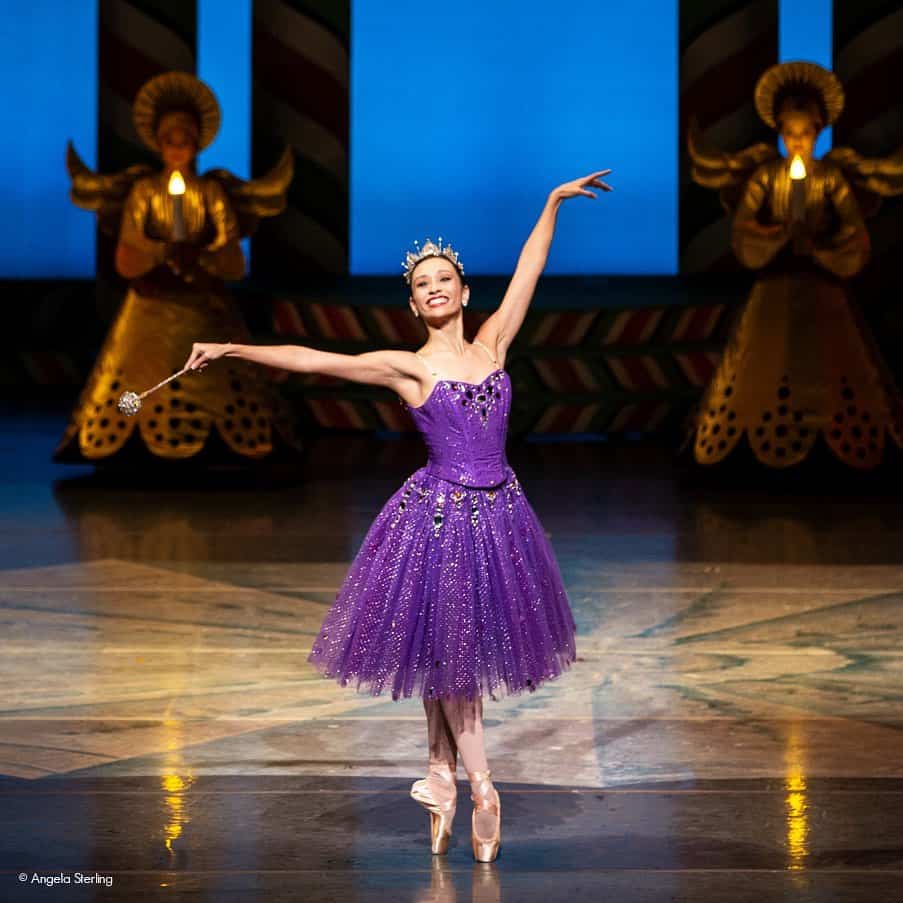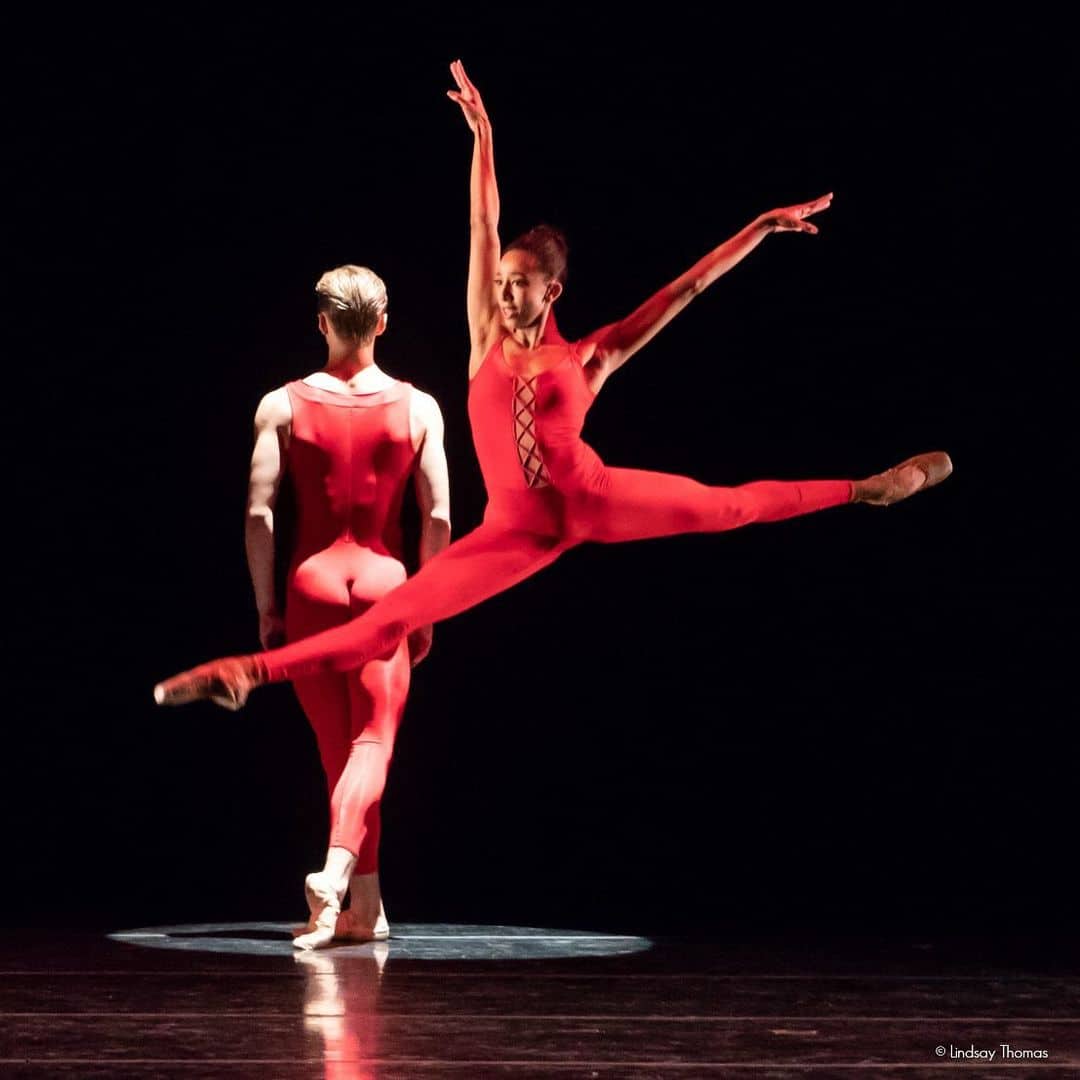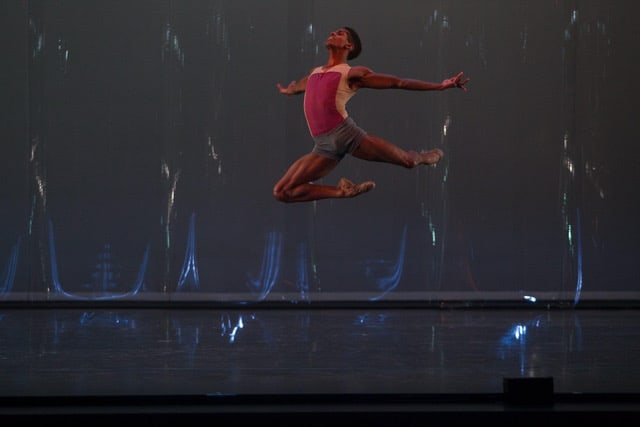Celebrating our Latinx, Chicana, & Hispanic Dancers
September 15 to October 15 is Latinx and Hispanic Heritage Month. To celebrate, we asked PNB artists identifying as Hispanic and Latinx share the many ways their heritage informs their artistry. Keep reading to hear from dancers Sarah-Gabrielle Ryan, Amanda Morgan, Dammiel Cruz, Jonathan Batista, and Clara Ruf Maldonado.
Sarah-Gabrielle Ryan
-
Sarah-Gabrielle Ryan, photo © Dan Lao. -
Sarah-Gabrielle Ryan as Sugar Plum Fairy in George Balanchine’s The Nutcracker, photo © Angela Sterling.
“My mom is from Puebla, Mexico and my dad grew up in Mexico and Belize. Growing up in a very family-oriented household, my parents raised me with their cultures – the languages they spoke and the foods they grew up eating. I had the privilege of being able to stay at home all of my training and first few professional years with Pennsylvania Ballet. Despite having friends and supportive instructors growing up who were from various cultural backgrounds and upbringings, it was my Hispanic and Latino relations that had the largest impact.
Crossing the country to join PNB was my first time moving away from home, my family, and everything that was familiar. As terrifying as it was I quickly, and unknowingly at the time, gravitated towards fellow dancers who shared similar customs and cultures. It was through similar foods, language, traditions, upbringings, and values that I found myself feeling closer to home.
My heritage has always been a large part of my identity and by being able to connect to others outside of my family in this way I felt a deeper love for my culture and therefore a greater sense of pride in myself. That pride I have in myself directly correlates to who I am as an artist – my goals, my approaches to movement, and my intent. Since I was a kid I’ve found myself drawn to dancers I could see myself in. Today I find myself looking to dancers like Katia Carranza of Miami City Ballet and Karina Gonzalez of Houston Ballet. I hope to be that for others as well.”
Amanda Morgan
-
Amanda Morgan in Opus 19, The Dreamer during PNB’s Paris tour at Les Etes de la Danse. Photo © Lindsay Thomas. -
Amanda Morgan in Ulysses Dove’s Red Angels, photo © Lindsay Thomas.
“Being an Afro-Indigenous woman I’ve found myself getting caught between how I can identify, and how people automatically identify me. My mother is from Dominican Republic and my father is Puerto Rican, so I’m full of many mixtures that originated on Caribbean islands. Growing up in Tacoma, there were not very many Puerto Ricans or Dominicans, so I always felt like I never fit in any mold. I wasn’t black enough to be black, was too black to be Latinx, and didn’t have indigenous ancestors from North America. Yet, with this revisitation of a civil rights movement, people are identifying fully how they want to, and learning their roots.
I’ve taken the time to learn mine, and it has influenced so much of my work and how I interact in my life. I have ancestors that were conquerors from Europe, some brought as slaves from Africa, and the indigenous people of my homeland, the Taíno and Arawak people. They all make up who I am, and I cannot identify as just one thing. Being able to have so much history and culture to identify with used to seem so overwhelming as a kid, but now I’m so grateful and proud to have come from so much. It’s a beautiful thing, and a beautiful thing about the Latinx community.”
Jonathan Batista
-
Jonathan Batista, courtesy of Jonathan. -

Jonathan Batista in Swan Lake, courtesy of Jonathan Batista.
“I was born and raised in Rio de Janeiro, Brazil – a city famously known for its festivity, art, music, and culture. As a kid, my parents first introduced me to music and rhythms such as Samba, bossa nova, Carnival, and Afro-Brazilian music. Soon enough I was dancing around the house, during family gatherings, and engaging with our community.
Once I moved away from home to pursue my studies in dance, I felt the need to connect with my Latinx heritage, it was a way to stay grounded and true to my roots and identity. Luckily, I had the opportunity to connect with Latinx dancers from other backgrounds who shared similarities within our culture which brought me comfort, acceptance and a feeling of belonging through their representation.
I am proud of my Latinx Heritage, proud to see a great representation of Latinx artists within Pacific Northwest Ballet. Happy Latinx/Hispanic Heritage Month!”
Dammiel Cruz
-

Dammiel Cruz in Ulysses Dove’s Red Angels, photo © Lindsay Thomas. -
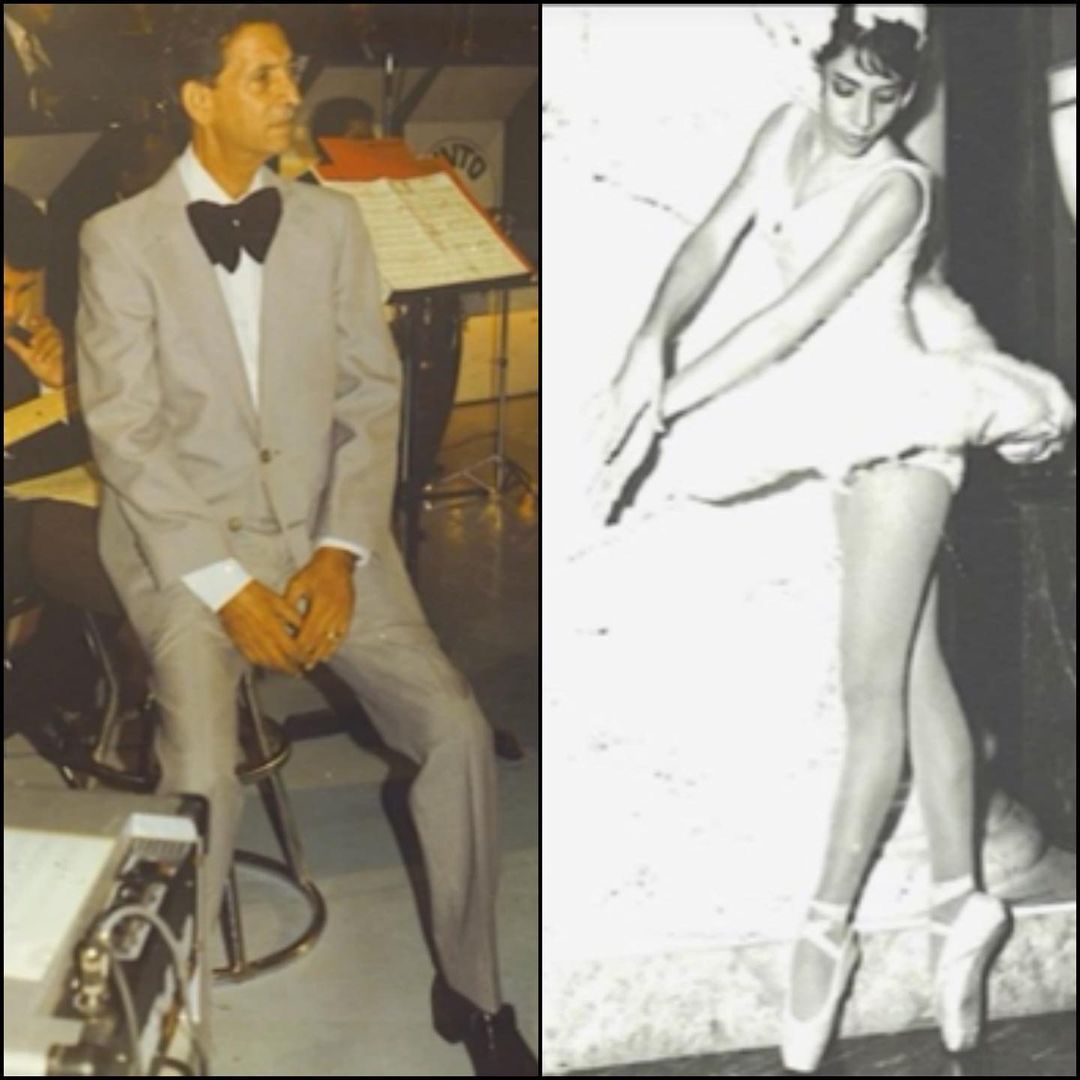
Dammiel Cruz’s grandparents. Photos courtesy of Dammiel.
“My mother and both of my grandparents lived most of their lives in Santo Domingo, the capital city of the Dominican Republic. Growing up in a household where Spanish was the main language being spoken allowed me to grow up speaking two languages fluently since I spoke English all day during my academic classes. I believe that my heritage informs my dancing mainly through my family’s history, both my grandmother and mother were professional ballerinas while my grandfather was an orchestra conductor back in The Dominican. It feels almost as if I was born into ballet in a way since I represent a 3rd generation of ballet dancers in my family. Also my relationship with former PNB principal and fellow Latino Karel Cruz is something I cherish a lot since he became someone who I could watch closely every day in the earlier part of my career.”
Clara Ruf Maldonado
-

Clara Ruf Maldonado and Kyle Davis in George Balanchine’s The Nutcracker, photo © Angela Sterling. -
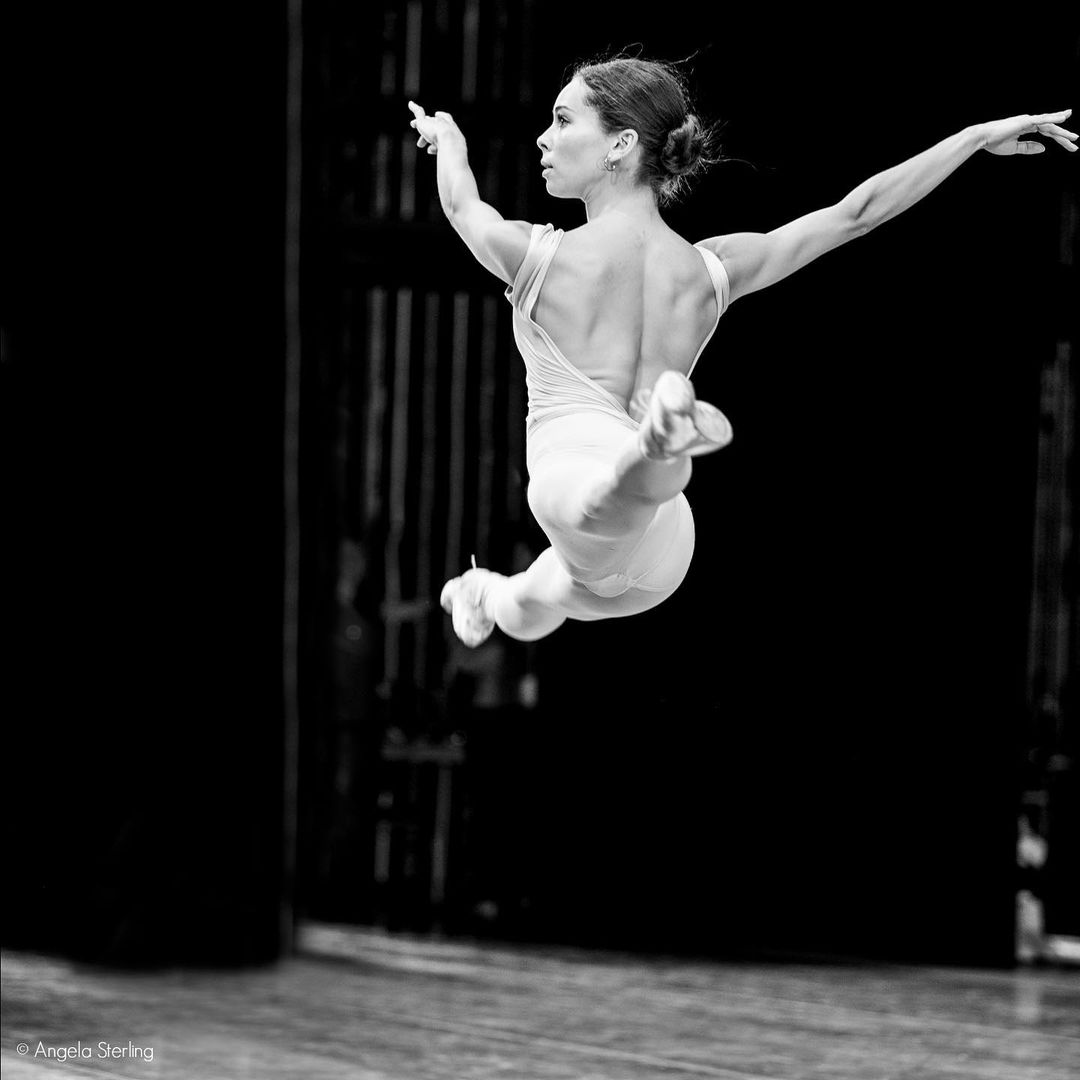
Clara Ruf Maldonado rehearsing onstage for George Balanchine’s Agon, photo © Angela Sterling.
“My father was born and raised between the countryside and the capitol of the Dominican Republic. Growing up in Lower Manhattan, I was fortunate to be surrounded by diversity. However, as I spent more time in ballet and less time at home, I learned that the world of American ballet was predominantly white. I found it difficult to identify with my latin heritage at ballet and began to feel that I myself was divided between two worlds. It wasn’t until my move to Seattle that I started to observe how far I’d strayed from my latin roots.
On joining PNB, I knew I had found a place that understood the importance of diversity, not only in its repertoire but among its dancers. I was surprised to see that we had our own community of Latin American dancers that I could connect with. Being mixed, I previously felt I couldn’t properly represent Dominicans in ballet. Finding this community through ballet helped me stay connected to my roots and, even more so, celebrate them by merging these two versions of myself I’d kept separate.
Latin American culture has an infectious energy and its dance, a vibrant rhythm. I am so proud to have that in my blood, and I try to relate that energy and passion to my own dancing. Here, away from my family, I want that to resonate on stage more than ever. I hope it makes me a more versatile dancer and that it keeps me open to new and unconventional styles of movement present in ballet today.
The journey towards implementing dance will be long and ongoing. I look forward to seeing PNB continue on this path towards a more diverse community so that artists of all backgrounds feel represented and have the opportunity to flourish.”
Another way to celebrate and learn more about our dancers is to watch and listen to this episode PNB is Listening. Theater artist and activist Ana María Campoy recently met with PNB dancers Amanda Morgan, Clara Ruf Maldonado, and Sarah-Gabrielle Ryan for a rich conversation about their respective Chicana and Latinx heritages, how their identities inform their dancing, and their advice to young dancers today.
Featured photo: Sarah-Gabrielle Ryan, photo © Dan Lao.


